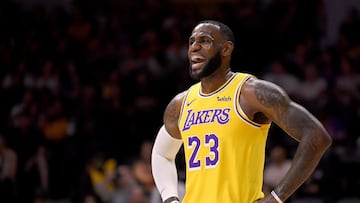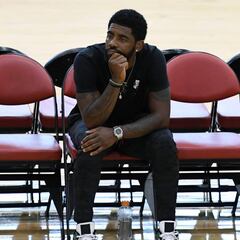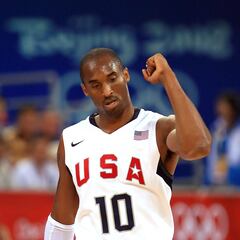What is the over-38 rule in the NBA and how does it affect LeBron James’ contract extension?
A provision in the CBA makes extensions for the veteran players in the NBA a tricky thing, as LeBron James just experienced for the first time.

LeBron James signed an extension with the Lakers this week for two seasons and $97.1 million. The contract, a 1+1 with a player option in the second year that could see him in Los Angeles through the 2024-2025 season, gives James flexibility as to where he wants to finish his NBA career, but it was also conditioned by the over-38 rule. The 37-year-old superstar is still performing at the highest level when he is on the court, so no franchise would doubt to offer him a maximum contract even as he comes closer to retirement, but his age is already limiting the deals he can get.
What is the over-38 rule in the NBA?
One of the provisions that the NBA players association and owners agreed to include in the last collective bargaining agreement put a limit to the length of contracts to be offered to the most veteran players in the league. This rule makes it so that players at or above age 38 at any point in the contract cannot sign for four or more years, while limiting extensions to two-year deals as in LeBron James’ case. This rule makes it so that teams do not end up hampering their future by handing large contracts to players whose abilities may rapidly diminish. It was previously the over-36 rule, but NBPA president Chris Paul got it up to 38 in 2016.
Why is LeBron James affected by this rule?
Related stories
The Lakers star is already 37 and will be 38 before 2022 is over, so he falls right into the rule’s lap as to why his extension is affected by it. James may still have wanted the contract flexibility he has acquired to make sure he can play with his son Bronny James, probably during the 2024-2025 season where the young player will already have been draft eligible. His extension will kick off when he is already over 38, so he was immediately the subject of this rule, just as he will be so again when he signs a new contract, probably after opting out in two seasons. James is already the highest earning player in NBA history, but his contracts will never be the biggest in the league again.
Is there any way around the rule? Chris Paul’s example
The only exception to the over-38 rule comes when the player is under 35 years old when he signs his contract and the team has his Bird rights. Bird rights allow teams to re-sign their own players even if they are over the cap, as well as other benefits, and are obtained by the team if a player has been with them for more than three years or was traded while on a contract with three or more guaranteed deals. These two conditions were curiously met by Chris Paul as he signed his last contract with the Phoenix Suns, a 4-year $120 million deal that will see him celebrate his 38th birthday with a contract not affected by the rule he himself altered a few years ago. He will not have any caveats to it whenever he signs his next deal, as will players such as Kevin Durant or Stephen Curry, whose current contracts carry them up to their age 37 seasons.


